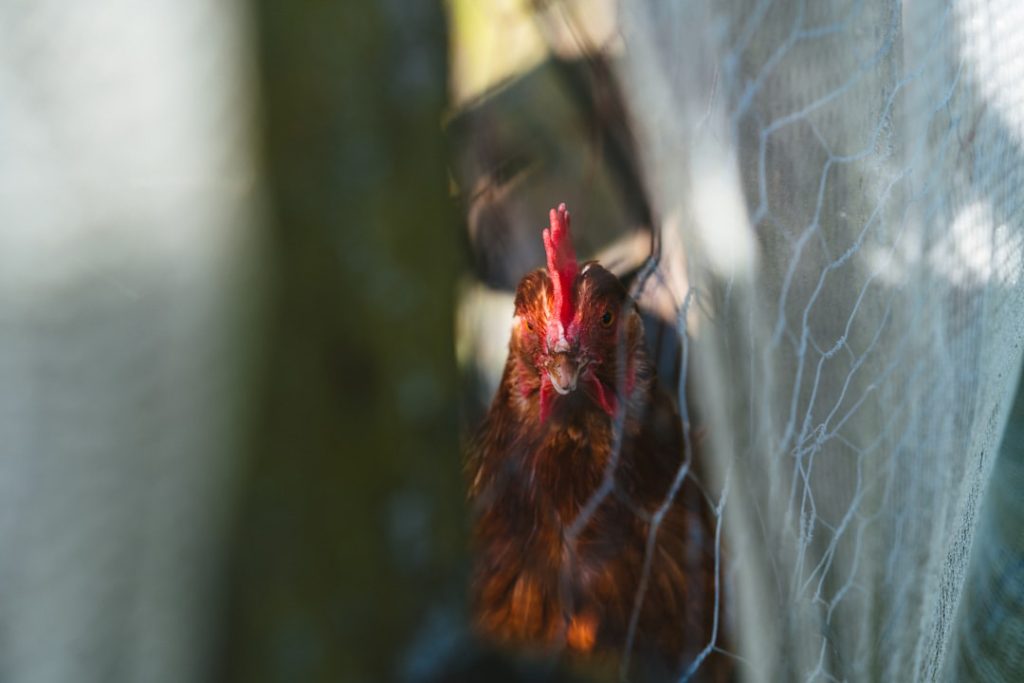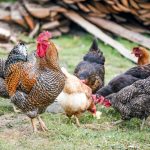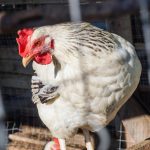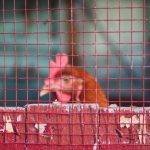Chickens are social animals that thrive in a flock environment. They possess natural instincts to forage for food, dust bathe, and roost at night. Understanding their behavior is crucial in creating a secure and comfortable run for them.
As prey animals, chickens are constantly vigilant for potential threats. They maintain a strict pecking order within the flock, necessitating adequate space and resources to prevent aggression and bullying. Chickens are also curious creatures that enjoy exploring their surroundings, and providing a stimulating environment is essential for their well-being.
Chickens have a natural instinct to scratch and peck at the ground in search of food. This behavior can be destructive to vegetation in the run if not managed properly. Understanding their foraging behavior is crucial in designing the run with appropriate ground cover and enrichment to keep them engaged.
Chickens also have a strong instinct to roost at night, making it essential to provide secure roosting spots in the run. Overall, comprehending chicken behavior is key to creating a run that meets their physical and psychological needs.
Table of Contents
Key Takeaways
- Chickens are social animals and have a natural pecking order, so it’s important to understand their behavior and provide a suitable environment for them to thrive.
- Building a secure run with sturdy fencing and a covered top is essential to protect chickens from predators and keep them safe.
- Clipping the wings of chickens can prevent them from flying over fences and escaping, but it should be done carefully and only when necessary.
- Providing enrichment and distractions such as perches, dust baths, and hanging treats can keep chickens entertained and reduce stress and boredom.
- Using netting or covers over the run can provide extra protection from aerial predators and prevent chickens from escaping.
- Training and conditioning chickens to come when called and feel comfortable being handled can make it easier to monitor and adjust the run as needed.
- Regularly monitoring the run for signs of wear and tear, potential escape routes, and any changes in chicken behavior can help ensure a safe and secure environment for the chickens.
Building a secure run
Predator-Proof Fencing and Roofing
A secure run is crucial for the safety and well-being of your chickens. The run should be predator-proof, with sturdy fencing and a secure roof to prevent any potential threats from getting in. It’s essential to bury the fencing underground to prevent predators from digging underneath. Additionally, the run should have a solid foundation to prevent predators from gaining access from below.
Providing a Healthy Environment
Providing adequate ventilation and natural light is vital for the health of the chickens. The run should be spacious enough to allow the chickens to move around freely and engage in natural behaviors such as scratching and dust bathing.
Choosing the Right Materials and Layout
When building a secure run, it’s essential to consider the materials used. The fencing should be made of strong, durable materials such as hardware cloth or welded wire to prevent predators from breaking in. The roof should be made of sturdy materials that can withstand harsh weather conditions and potential attacks from predators. It’s also important to consider the layout of the run, providing areas for shade and shelter from the elements.
Clipping the wings
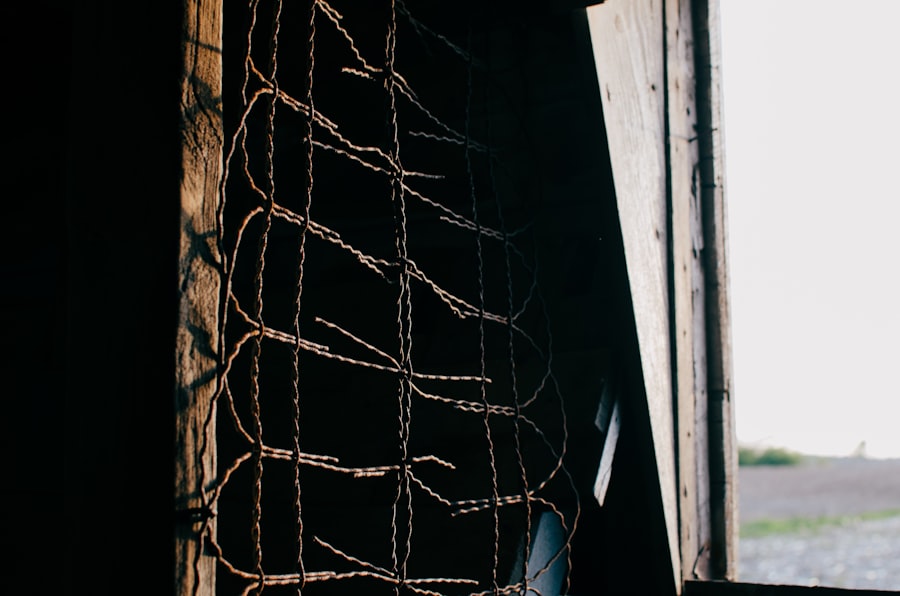
Clipping the wings of chickens is a common practice to prevent them from flying over fences and escaping from the run. This is done by trimming the primary feathers on one wing, which disrupts their balance and prevents them from achieving lift when they try to fly. It’s important to clip the wings carefully and avoid cutting into the blood feathers, as this can cause pain and bleeding.
Clipping the wings should be done with sharp, clean scissors, and it’s best to have someone assist in holding the chicken while you trim the feathers. Clipping the wings is a temporary solution and will need to be repeated as the feathers grow back. It’s important to monitor the feathers regularly and re-clip them as needed to maintain the security of the run.
While some people may feel hesitant about clipping the wings of their chickens, it’s important to remember that it is a safe and painless procedure when done correctly. Clipping the wings allows the chickens to remain safely within the confines of the run while still allowing them to engage in natural behaviors such as scratching and foraging.
Providing enrichment and distractions
Providing enrichment and distractions in the run is essential for keeping chickens happy and healthy. Chickens are intelligent animals that thrive on mental stimulation, so it’s important to provide them with activities that keep them engaged. This can include hanging treats or toys for them to peck at, providing perches or platforms for them to roost on, or creating areas for dust bathing.
Additionally, providing them with access to fresh vegetation or insects can keep them entertained and engaged in natural behaviors. It’s important to rotate and vary the enrichment provided to prevent boredom and keep the chickens stimulated. This can include introducing new toys or treats regularly, or rearranging the layout of the run to create new areas for exploration.
Providing enrichment and distractions not only keeps the chickens happy, but it also reduces stress and prevents negative behaviors such as pecking or aggression within the flock. Overall, providing enrichment and distractions in the run is essential for the overall well-being of the chickens.
Using netting or covers
Using netting or covers in the run can provide additional security for your chickens. Netting can be used to cover the top of the run to prevent aerial predators such as hawks or owls from swooping down and attacking the chickens. It’s important to use strong, durable netting that can withstand potential attacks from predators.
Additionally, covers can be used to provide shade and protection from harsh weather conditions such as rain or snow. This can help keep the chickens comfortable and safe while they are in the run. When using netting or covers, it’s important to regularly inspect them for any signs of wear or damage.
This can include tears or holes that could potentially allow predators to gain access to the run. It’s also important to ensure that the netting or covers are securely fastened to prevent them from being blown away by strong winds or other weather conditions. Overall, using netting or covers in the run provides an additional layer of security and protection for your chickens.
Training and conditioning
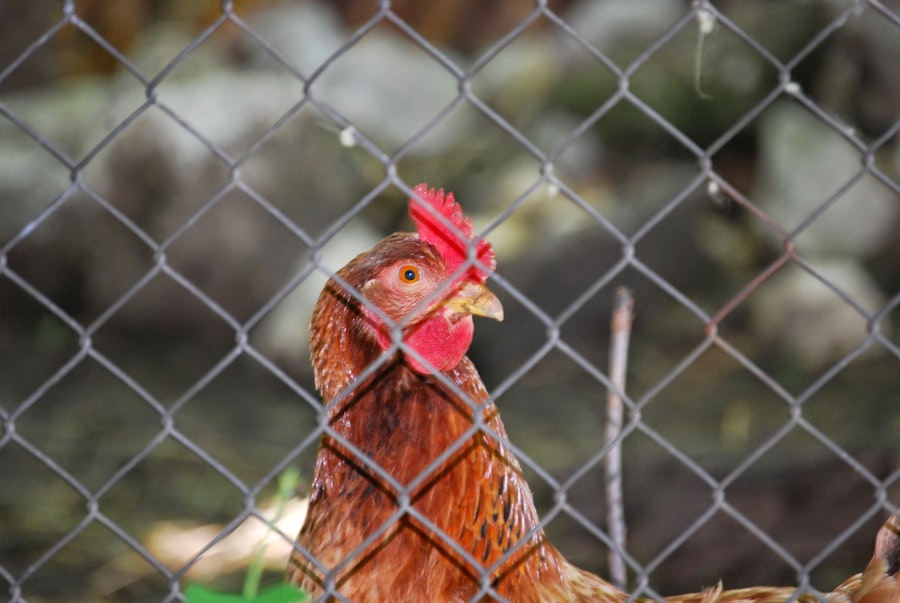
Preventing Negative Behaviors
Training and conditioning your chickens can help prevent negative behaviors such as aggression or fearfulness within the flock. This can include positive reinforcement training to encourage desired behaviors such as coming when called or using designated areas for dust bathing.
Reducing Stress and Improving Well-being
Additionally, conditioning can help desensitize chickens to potential stressors such as loud noises or handling, which can reduce their overall stress levels and improve their well-being.
Effective Training Techniques
Training and conditioning should be done gradually and with patience, using rewards such as treats or praise to reinforce positive behaviors. It’s important to be consistent in your training efforts and provide regular opportunities for your chickens to practice their new skills.
A Stronger Bond and Harmonious Flock
Training and conditioning not only improves the behavior of your chickens but also strengthens your bond with them, leading to a more harmonious flock dynamic.
Monitoring and adjusting the run
Monitoring and adjusting the run is an ongoing process that requires regular attention and maintenance. It’s important to regularly inspect the fencing, roof, and other structural elements of the run for any signs of wear or damage that could compromise its security. Additionally, monitoring the behavior of the chickens within the run can provide valuable insight into their well-being and any potential issues that may need addressing.
Adjusting the run may involve making changes to the layout or adding new enrichment features to keep the chickens engaged. It may also involve making repairs or improvements to ensure that the run remains secure and comfortable for the chickens. Regular monitoring and adjusting of the run is essential for maintaining a safe and stimulating environment for your chickens.
In conclusion, understanding the behavior of chickens is crucial in creating a secure run that meets their physical and psychological needs. Building a secure run requires careful planning and attention to detail to ensure the safety and comfort of the chickens. Clipping the wings can prevent them from flying over fences and escaping from the run while still allowing them to engage in natural behaviors.
Providing enrichment and distractions keeps chickens happy and healthy, while using netting or covers provides additional security. Training and conditioning can help prevent negative behaviors within the flock, while monitoring and adjusting the run is essential for maintaining a safe environment for your chickens.
If you’re looking for tips on how to keep chickens from flying out of their run, you might find this article on chicken coop design in Chester, SC helpful. It discusses various ways to design a coop to prevent chickens from escaping, including the height of the walls and the use of netting or covers.
FAQs
What are some methods to keep chickens from flying out of the run?
Some methods to keep chickens from flying out of the run include clipping their flight feathers, adding a roof or netting to the run, and providing plenty of enrichment and space within the run to discourage flight.
Is it safe to clip a chicken’s flight feathers?
Yes, it is safe to clip a chicken’s flight feathers if done properly. It is a painless procedure that involves trimming the primary feathers on one wing to prevent the chicken from achieving lift.
What are the benefits of adding a roof or netting to the chicken run?
Adding a roof or netting to the chicken run can prevent chickens from flying out while still allowing them to have access to fresh air and sunlight. It also provides protection from predators and keeps the chickens contained in a safe environment.
How can providing enrichment and space within the run discourage chickens from flying out?
Chickens are less likely to attempt to fly out of the run if they have plenty of space to roam and explore, as well as access to items such as perches, dust baths, and toys. Keeping them mentally and physically stimulated within the run can reduce their desire to escape.
Meet Walter, the feathered-friend fanatic of Florida! Nestled in the sunshine state, Walter struts through life with his feathered companions, clucking his way to happiness. With a coop that’s fancier than a five-star hotel, he’s the Don Juan of the chicken world. When he’s not teaching his hens to do the cha-cha, you’ll find him in a heated debate with his prized rooster, Sir Clucks-a-Lot. Walter’s poultry passion is no yolk; he’s the sunny-side-up guy you never knew you needed in your flock of friends!

